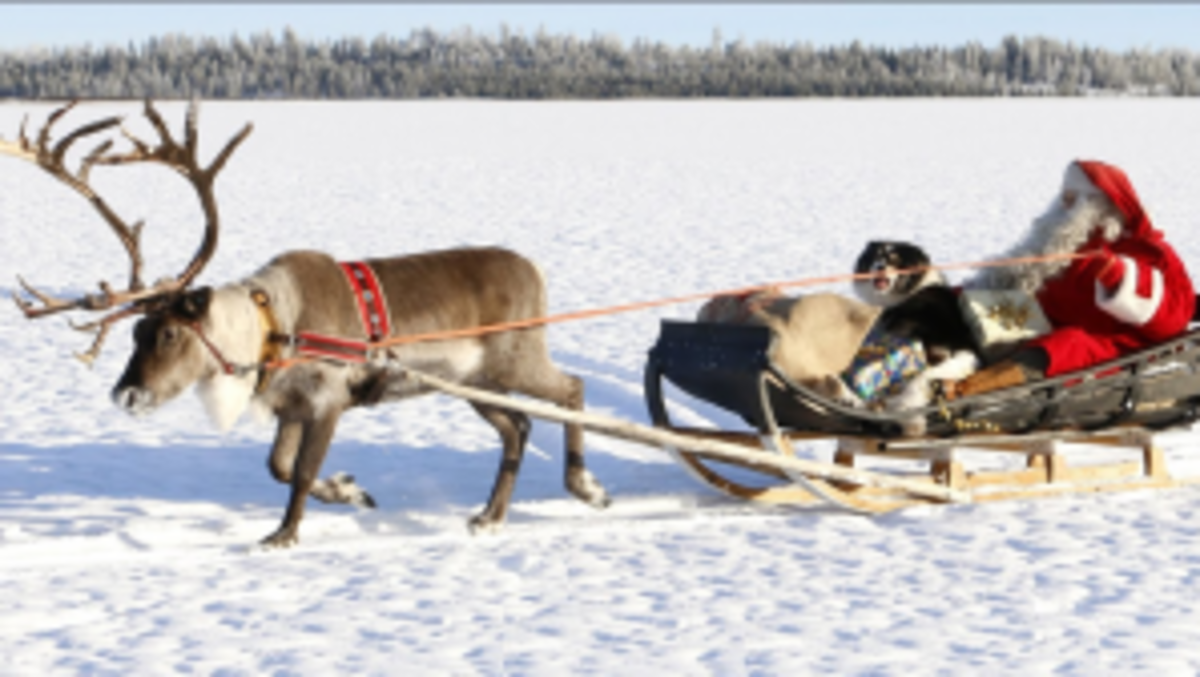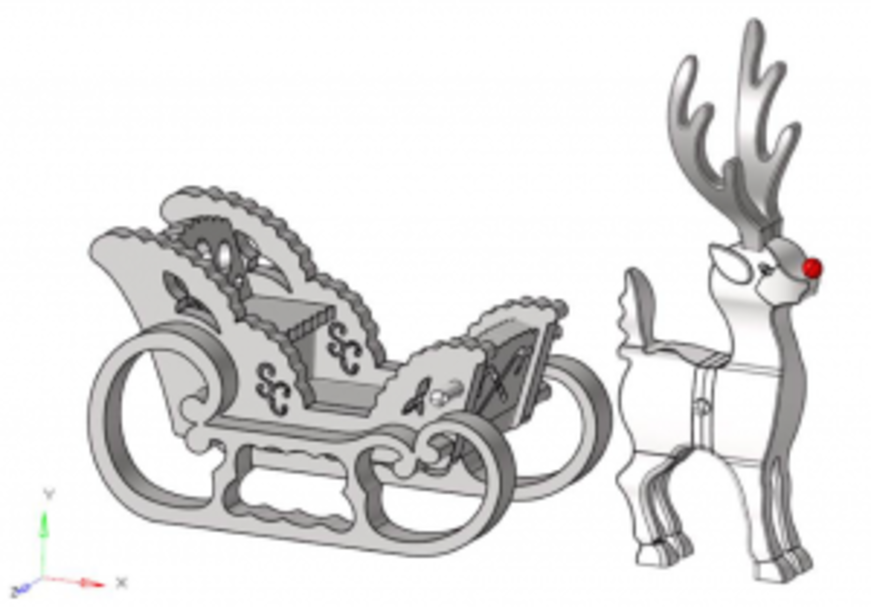Can Santa fly?

It has accompanied us from childhood, the image of Santa Claus flying through the air with his sleigh pulled by reindeer and distributing his gifts.
The above picture, however, must be a fake, since the reindeer does not have a red nose.
As computational engineers, we are of course primarily interested in physics, precisely the question, can the whole team, consisting of reindeer, Santa Claus, sleigh and presents fly at all? And if so, how fast does it have to be?
We have devoted ourselves to this problem in our series of fact checks in this Christmas issue.
We are, of course, well equipped to measure and mesh a possibly existing Santa Claus team using laser scanning techniques and to examine it in detail in terms of fluid mechanics, but our scouts were unable to find anything here.
The databases where you can find ready-made 3D models are also very poor for reindeer teams, but we have found a model with which we can definitely answer the above question.
Admittedly, somewhat abstracted, with its dimensions of 140 cm x 75 cm sled base area a little too small, but sufficient for our purposes.
Santa Claus is also missing, but if he comes along it probably won't be any better, especially if he's as well built as in the first picture.
So we'll leave him out for now.
As aerodynamicists, we know that a flat plate has to be put on so that it can fly at all. Since nothing should fall out of the sled, we have assumed an angle of attack of 10 degrees.
A first hand calculation of an accordingly adjusted flat plate with the above dimensions results in a speed of roughly 540 m/s, if the lift force is to carry an estimated weight of 250 kg. (1.8 times the speed of sound? Hmm, that will be hard, but explains Rudolph's red nose!).
Let's assume simplified an incompressible flow, because Christmas is coming and the calculation should not prove our clusters exclusively (supersonic, shocks etc. we forget for now, but we can!).
The following picture results:
Rudolph disturbs the inflow of the sled bottom and reduces the load capacity from 250 kg to only 60 kg at an inflow speed of 540 m/s!
Yes, I know, the sleigh is bigger and Santa Claus isn't quite as fat, but the result doesn't change: The reality check shows us that we've fallen for bad fake news here, which has haunted us since childhood.
The thing never ever flies, certainly not supersonic!
I am aware that now your childhood dreams are in shambles, but science has triumphed. Not that I want to compare myself with Galileo now... although, there is something to it. After all, mankind has believed for centuries that the sun orbits the earth, possibly even as an adjusted disk.
Nothing is so powerful as an idea whose time has come.
So: Not only the way of a 150 kg heavy man through the chimney is difficult to explain, but also that he should have landed on the roof with a flying sledge.
In this sense, I wish you and your family all the best, relaxing and contemplative holidays and a happy new year.
Your Stefan Merkle
PS: Side note: If you are a motor sports enthusiast and have a race car in your garage that you want to optimize a bit aerodynamically, and also have some spare change that your wife/husband doesn't know about, then we are just the right partner to help you get around the race track a few seconds faster.
Have we aroused your interest?
If you have similar tasks, please do not hesitate to contact us.
We would also be happy to arrange a non-binding consultation appointment or a telephone consultation.
Phone: +49 (0)7321 9343-0
E-Mail: info@merkle-partner.de
Of course, you are also welcome to browse our website:
www.merkle-partner.de
